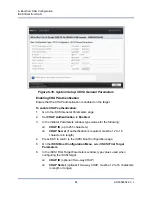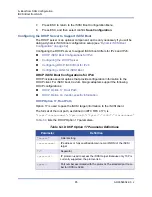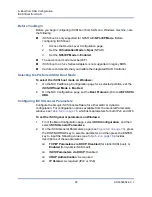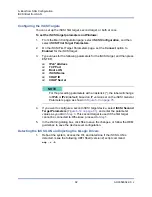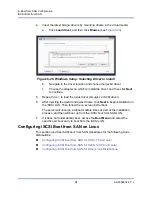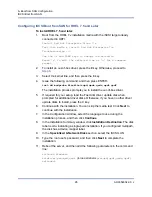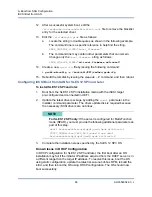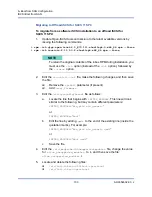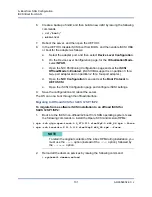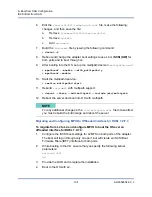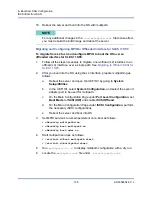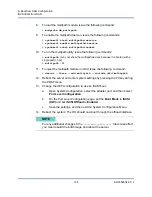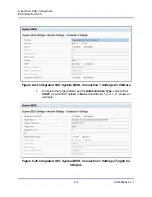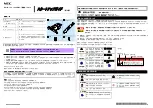
6–Boot from SAN Configuration
iSCSI Boot from SAN
97
AH0054602-00 J
Configuring iSCSI Boot from SAN for Other Linux Distributions
For distributions such as RHEL 6.9/6.10/7.2/7.3, SLES 11 SP4, and SLES 12
SP1/2, the inbox iSCSI user space utility (Open-iSCSI tools) lacks support for qedi
iSCSI transport and cannot perform user space-initiated iSCSI functionality.
During boot from SAN installation, you can update the qedi driver using a driver
update disk (DUD). However, no interface or process exists to update userspace
inbox utilities, which causes the iSCSI target login and boot from SAN installation
to fail.
To overcome this limitation, perform the initial boot from SAN with the pure L2
interface (do not use hardware-offloaded iSCSI) using the following procedure
during the boot from SAN.
iSCSI offload for other distributions of Linux includes the following information:
Booting from SAN Using a Software Initiator
Migrating from Software iSCSI Installation to Offload iSCSI
Linux Multipath Considerations
Booting from SAN Using a Software Initiator
To boot from SAN using a software initiator with Dell OEM Solutions:
1.
Access the Dell EMC System BIOS settings.
2.
Configure the initiator and target entries. For more information, refer to the
Dell BIOS user guide.
3.
At the beginning of the installation, pass the following boot parameter with
the DUD option:
For RHEL 6.
x
, 7.
x
, and older:
rd.iscsi.ibft dd
No separate options are required for older distributions of RHEL.
For SLES 11 SP4 and SLES 12 SP1/SP2:
ip=ibft dud=1
For the FastLinQ DUD package (for example, on RHEL 7):
fastlinq-8.18.10.0-dd-rhel7u3-3.10.0_514.el7-x86_64.iso
NOTE
[[
The preceding step is required because DUDs contain qedi, which
binds to the iSCSI PF. After it is bound, Open-iSCSI infrastructure fails
due to unknown transport driver.


